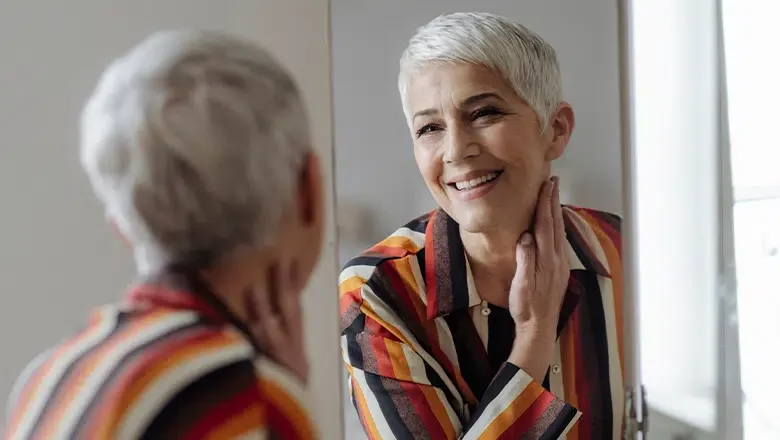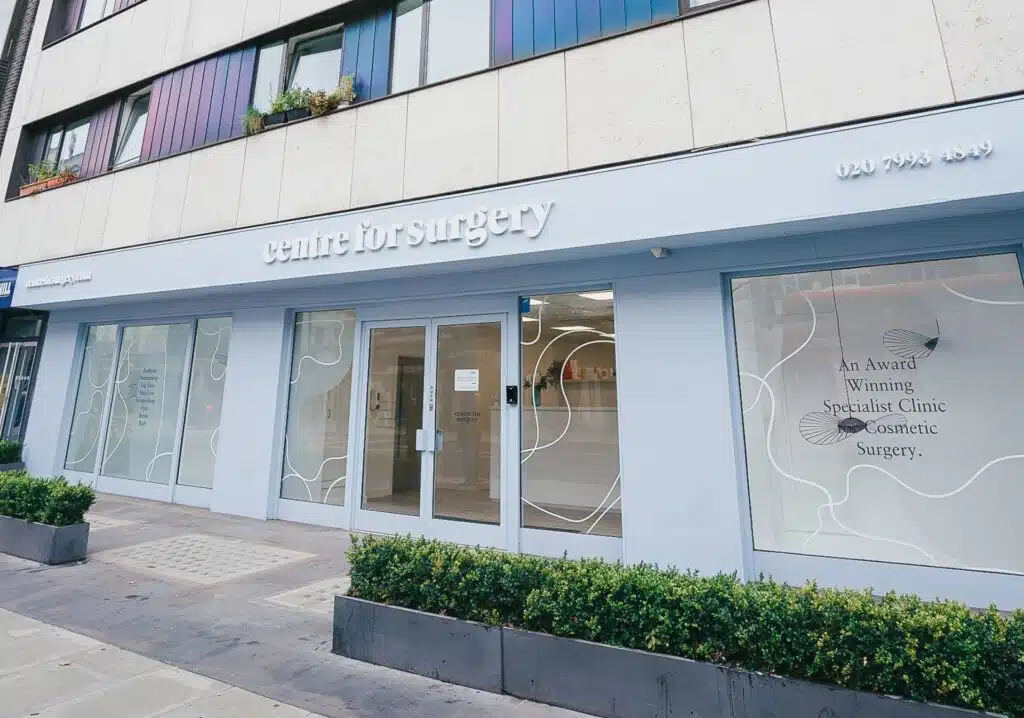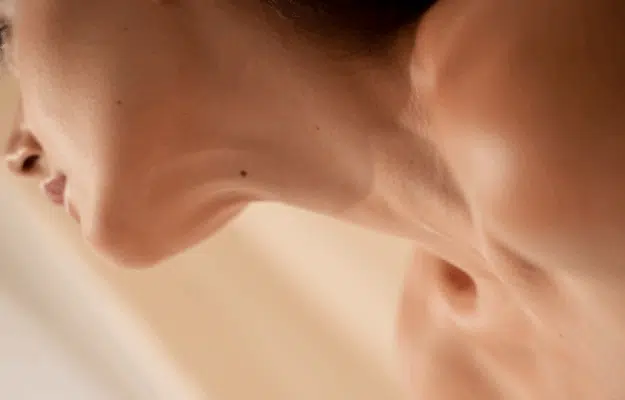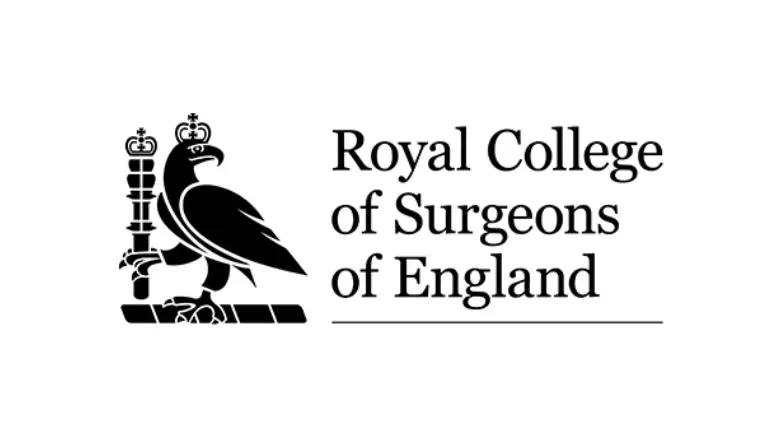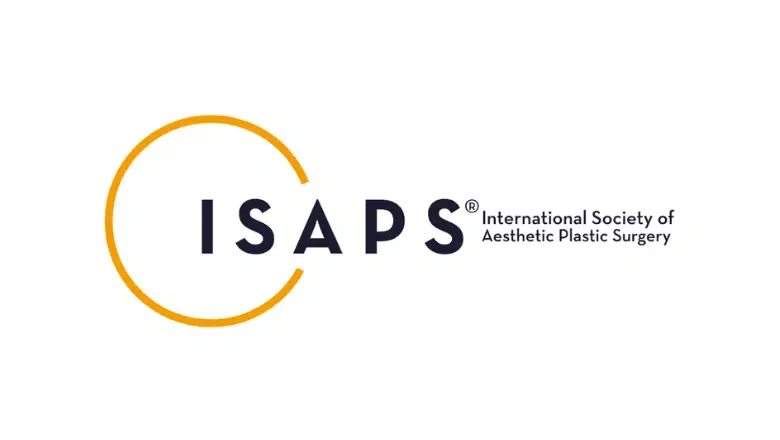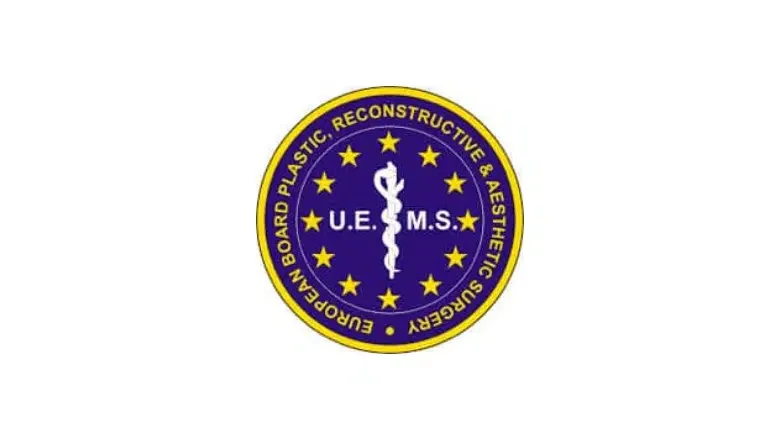Skin elasticity begins to decline with age due to reduced collagen production. Age-related fat loss occurs from certain areas of the face leading to sunken cheeks, and the underlying bone loses its defined contours. Facelifts and neck lifts are commonly undertaken cosmetic surgery procedures to address signs of ageing affecting the face and neck, including sagging neck, turkey neck, double chin and jowls.
Facelift surgery or rhytidectomy is designed to lift the skin and soft tissues of the face to a higher level which helps to get rid of wrinkles and sagging skin and restore a youthful look. Neck lift surgery is similarly aimed at tightening the skin around the jawline and chins. A neck lift can effectively get rid of jowls for a more defined jawline. Facelift and neck lift procedures are the ideal treatment option for double chin, sagging neck, turkey and jowls. A mini facelift is designed to tighten sagging skin in the lower part of the face. For those with early signs of ageing, a one-stitch facelift can rejuvenate the middle part of the face. Facelift for men is also commonly undertaken at our state-of-the-art Baker Street clinic in Marylebone.
Double chin
When people talk about a double chin, they commonly refer to excess fat located in the submental area, which may result in a person looking like they have two chins.
The accumulation of excess fat beneath the chin is related to several factors. The formation of a double chin is most commonly due to significant weight gain and is commonly seen in people who are overweight or obese. The natural ageing process may also result in developing a double chin. As we age, the skin begins to lose elasticity, and excess fat is more likely to appear more prominent. Some people are more predisposed to developing a double chin due to the anatomy of their chin and neck. There are several small muscles which form the floor of the mouth and primarily function to stabilise the position of the trachea with their insertion into the hyoid bone. People with a high insertion level are more likely to have a well-defined chin-neck angle. Those with a lower angle of insertion may have a poorly defined angle between the neck and chin. This means that any amount of fat removal from beneath the chin is not likely to improve definition.
People with double chins can develop a significant loss of self-confidence and may feel increasingly self-conscious about how they look. This may cause them to avoid certain situations where the double chin may appear more prominent such as on video conferencing. Choosing to have a facelift and neck lift at Centre for Surgery will help to get rid of a double chin permanently. Facelift surgery involves removing loose skin and excess fat from the lower part of the face, chin and neck area. Once excess skin and fat are trimmed, the remaining skin will be repositioned upward to tighten the lower face and neck and eliminate a double chin. Chin liposuction is an effective alternative treatment to get rid of fat beneath the chin and contour the jawline in those with good skin elasticity.
RELATED: Can chin liposuction get rid of a double chin?
Sagging neck
The neck area is a common site for developing sagging and loose skin from loss of skin elasticity. Common causes include ageing, significant weight loss, hereditary and lifestyle factors, including smoking, too much sunlight exposure and inadequate skin care. Those who have significant amounts of fat beneath the chin, also known as submental fat, combined with a reduced neck-chin angle, are more likely to develop sagging skin in the neck. The cervical-mental angle is related to the underlying position of the small muscles that insert into the floor of the mouth and help to stabilise the trachea in position. A low position of the hyoid bone often results in an ill-defined angle, resulting in skin that appears tented between the kitchen and the neck.
RELATED: Solutions For Saggy Neck – Neck Liposuction vs Neck Lift
The ageing process, excessive sun exposure, and smoking are most often responsible for sagging skin that affects the neck. The skin often loses its skin elasticity over time and becomes much thinner. This results in greater visibility of the platysma muscle’s vertical cords surrounding the neck. These vertical neck cords are also known as neck bands. In some cases, the vertical neck fans are commonly seen together with excess skin in the middle part of the neck, which is often referred to as a turkey neck.
RELATED: How to Tighten Neck Skin Without Surgery
Several non-surgical treatments are available to tackle loose neck skin, but none are as successful as neck lift surgery to get rid of a saggy neck. Neck lift surgery involves repositioning the skin upwards and backwards to tighten loose neck skin. This can also eliminate sagging jowls along the jawline in the same procedure. Facelift or neck lift surgery may be combined with fat transfer to the face to enhance volume in areas such as the cheeks.
Turkey neck
A ‘turkey neck‘ refers to excess skin, which often sags in the middle part of the neck from the chin. This loose and redundant skin often hangs over a considerable part of the neck, and the turkey neck description comes from a certain species of bird with a well-defined flap of skin that hangs down from beneath its chin. The ageing process is most commonly responsible for the development of a turkey neck due to a loss of skin elasticity and collagen. Loose skin then has the propensity to sag downwards from the chin. As the neck muscles begin to weaken with age, the overlying skin begins to lose its natural tightness. People who have lost significant weight are at greater risk of developing a turkey neck. Although facial exercises have been promoted to reduce the appearance of a turkey neck, they are mainly ineffective. The best form of treatment for a turkey neck is a surgical neck lift involving the removal of loose skin and surplus fat combined with tightening of the neck muscles.
RELATED: Neck Lift FAQs – Q&A about Neck Lift Surgery
Saggy Jowls
Sagging Jowls are an inevitable part of the ageing process and gradually become a prominent jawline feature. Jowls form due to a loss of skin elasticity and become more prominent under gravity. The soft tissues of the face are maintained in position by a series of anatomical ligaments linking various parts of the facial anatomy. The upper part of the face often appears wider and tapers down towards a narrow chin when we are younger. This situation is reversed as we age, resulting in a wider lower face and a narrow upper part of the face. The lateral aspect of the eyes begins to descend, and the corners of the mouth become downturned. Nasolabial folds develop due to the loosening of the soft tissue attachments of the skin, and the jawline begins to lose its definition with the formation of jowls with age.
Everyone will eventually develop jowls as we age, although some are more likely to have more prominent jowls than others. This can be genetic in some cases, although excessive sunlight exposure and smoking are more likely to result in extensive jowls. The ethnic origin of a person and Fitzpatrick’s skin type can also determine when jowls begin to form. Those with lighter skin types, particularly from northern Europe, may be more likely to develop extensive jowls than those from Southern Europe. The presence of well-defined facial features, including high cheekbones and prominent jawlines, can help reduce jowls’ appearance.
Certain measures can be taken to delay the onset of jowls, including regular sunscreen application and maintaining a good daily skincare regime. Despite this, a surgical procedure may still be required later on. A mini facelift can help reduce and eight the lower part of the face and restore a natural inverted triangle shape often associated with youth.
Choosing a facelift at Centre for Surgery means you will have an expert surgeon to carry out your procedure. Our surgeons are skilled at delicately separating sagging soft tissue away from underlying bone, followed by surgical repositioning of tissue to a higher level which helps to tighten the skin and get rid of jowls. Despite the many non-surgical facelift treatments available, a facelift procedure is still the most effective treatment to tackle the signs of facial ageing.
Non-surgical facelift
A non-surgical facelift is an excellent procedure for restoring a natural and younger facial appearance with anti-wrinkle injections and dermal fillers. Facial injectable treatments are commonly used to replace the loss of facial volume and fill in lines, wrinkles, and deeper skin folds. A non-surgical facelift is a powerful, completely non-surgical technique with minimal downtime and minimal risk. Non-surgical facelift is performed in the clinic using specialised combinations of wrinkle-relaxing injections and dermal fillers to stop facial ageing. Your surgeon will first apply a topical anaesthetic cream for 30-45 minutes to optimise patient comfort during the injection part of the procedure. Patient downtime is minimal and is characterised by minor swelling and bruising, which settles quickly. Patients can apply makeup after treatment to allow for the full resumption of their daily activities.
Although a non-surgical facelift has many benefits, including its safety and effectiveness, there are disadvantages to be aware of. The main drawback is that the results are not permanent in nature. Dermal fillers last for up to 12-15 months, depending on the type of filler used and its placement location. The ideal strategy to maintain results is to have maintenance top-up treatments every 6-9 months. Anti-wrinkle injections need more frequent top-ups, and this is often around every 3-4 months. Before committing to a non-surgical facelift, patients must understand the need for regular maintenance treatments to maintain results. Non-surgical facelifts have surged in popularity in recent years; however, if a patient has moderate to severe skin laxity, anti-wrinkle injections and dermal fillers may not be enough to achieve the desired appearance. By having access to the full range of treatment options, both surgical and non-surgical, our surgeons can advise you on the best treatment for you.
Facelift surgery at Centre for Surgery
If you have noticed a sagging neck, jowls, double chin or a turkey neck, get in touch with us today to arrange a detailed consultation with a consultant plastic surgeon at Centre for Surgery to discuss the full range of treatments, including mini facelift, one stitch facelift and full facelift surgery.
